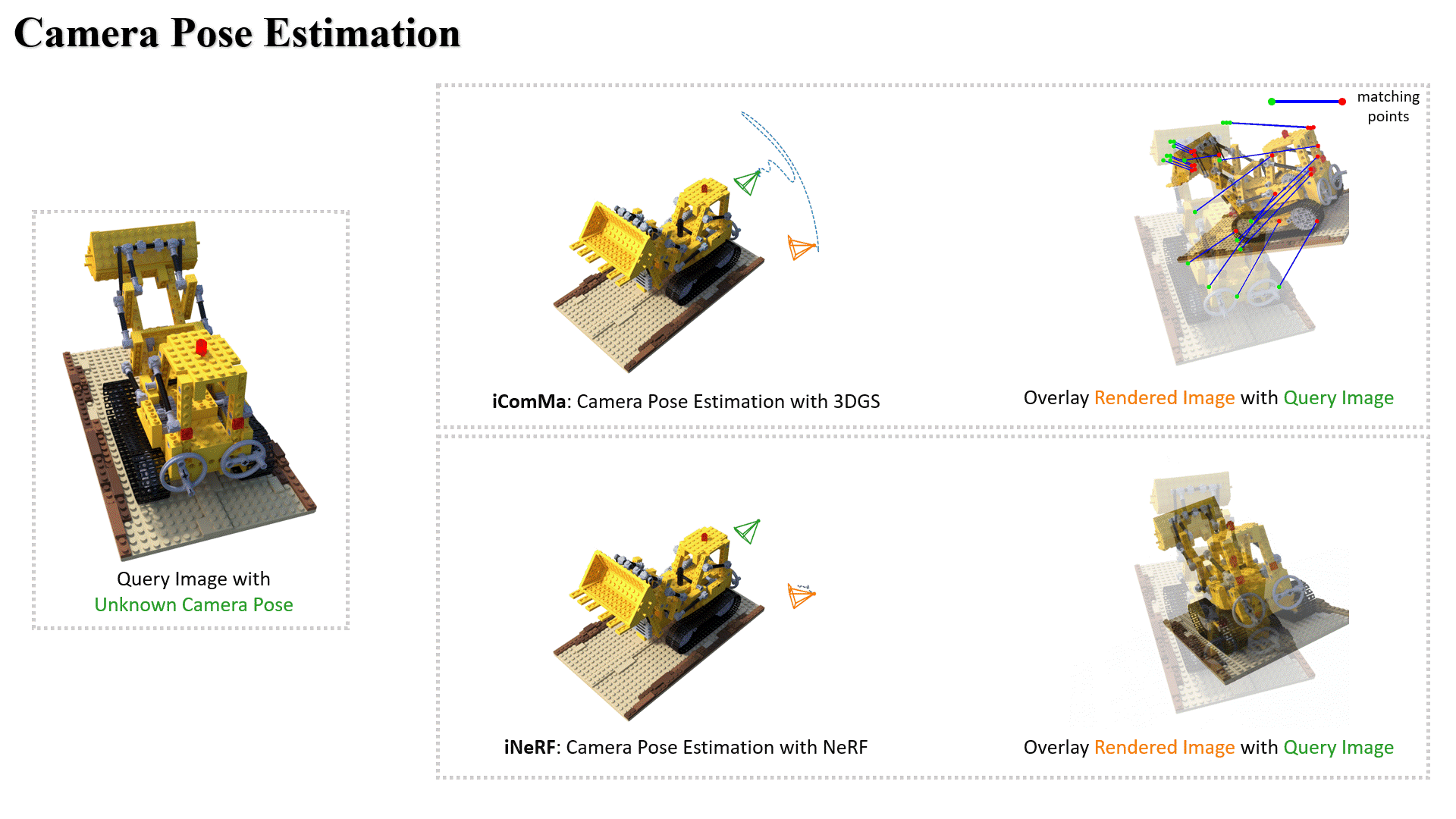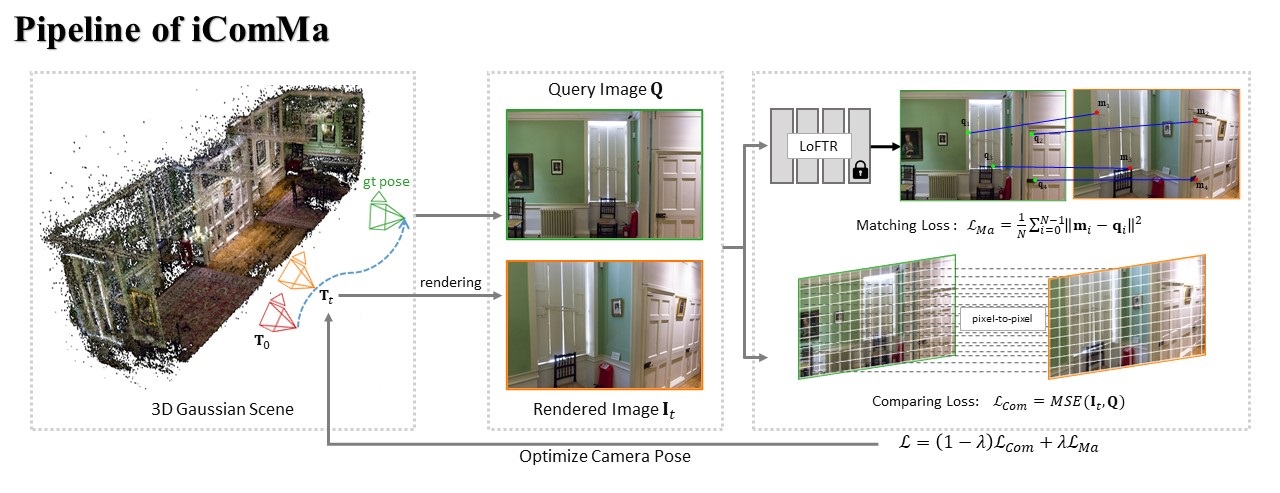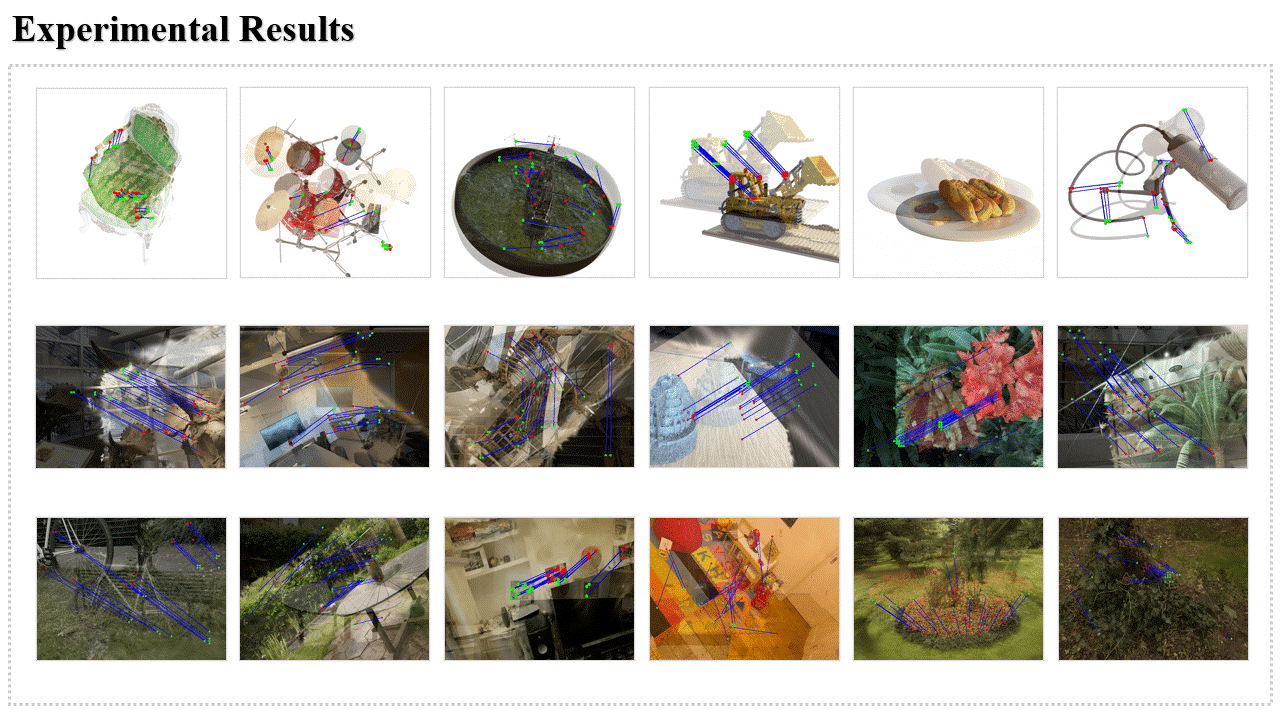Create environment through conda:
conda create -n icomma python=3.10
conda activate icomma
Install PyTorch compatible with the CUDA version: My CUDA version is 11.7, and the PyTorch version is 1.13.1.
pip install torch==1.13.1+cu117 torchvision==0.14.1+cu117 torchaudio==0.13.1 --extra-index-url https://download.pytorch.org/whl/cu117
Clone the repository and install dependencies:
git clone https://github.com/YuanSun-XJTU/iComMa.git
cd iComMa
pip install -r requirements.txt
1. Download the pre-trained LoFTR model.
Download the LoFTR model to the path: LoFTR/ckpt.
├── LoFTR
│ ├── ckpt
│ ├── indoor_ds_new.ckpt
│ ├── indoor_ot.ckpt
│ ├── outdoor_ds.ckpt
│ ├── outdoor_ot.ckpt
Compared to the raw LoFTR code, we have modified the files LoFTR\src\loftr\utils\coarse_matching.py and LoFTR\src\loftr\utils\fine_matching.py to ensure gradient backpropagation.
2. Prepare data and train the 3DGS model. We evaluated our method using the Blender, LLFF, and 360° Scene datasets provided by NeRF and Mip-NeRF 360. You can download them from their respective project pages.
Alternatively, you can build your own Colmap-type dataset following the guidelines of 3D Gaussian Splatting.
After obtaining the <source path>, train the 3DGS model according to the tutorial of 3D Gaussian Splatting. It should have the following directory structure:
├── <model path>
│ ├── point_cloud
│ ├── cameras.json
│ ├── cfg_args
│ ├── input.ply
3. Camera pose estimation. Run iComMa for camera pose estimation with the following script:
python run.py -m <model path> --obs_img_index <query camera index> --delta <camera pose transformation>
<camera pose transformation> represents a transformation applied to the camera pose corresponding to the query image, used to initialize the start camera pose. It is a list, for example, [30, 10, 5, 0.1, 0.2, 0.3]. The first three values represent rotational transformations, and the last three values represent translational transformations.
If you find our work useful in your research, please consider citing:
@article{sun2023icomma,
title={icomma: Inverting 3d gaussians splatting for camera pose estimation via comparing and matching},
author={Sun, Yuan and Wang, Xuan and Zhang, Yunfan and Zhang, Jie and Jiang, Caigui and Guo, Yu and Wang, Fei},
journal={arXiv preprint arXiv:2312.09031},
year={2023}
}
The majority of code reuse comes from 3D Gaussian Splatting: https://github.com/graphdeco-inria/gaussian-splatting
@Article{kerbl3Dgaussians,
author = {Kerbl, Bernhard and Kopanas, Georgios and Leimk{\"u}hler, Thomas and Drettakis, George},
title = {3D Gaussian Splatting for Real-Time Radiance Field Rendering},
journal = {ACM Transactions on Graphics},
number = {4},
volume = {42},
month = {July},
year = {2023},
url = {https://repo-sam.inria.fr/fungraph/3d-gaussian-splatting/}
}
Reference LoFTR for the matching module: https://github.com/zju3dv/LoFTR
@article{sun2021loftr,
title={{LoFTR}: Detector-Free Local Feature Matching with Transformers},
author={Sun, Jiaming and Shen, Zehong and Wang, Yuang and Bao, Hujun and Zhou, Xiaowei},
journal={{CVPR}},
year={2021}
}
Reference the code of iNeRF: https://github.com/salykovaa/inerf
@article{yen2020inerf,
title={{iNeRF}: Inverting Neural Radiance Fields for Pose Estimation},
author={Lin Yen-Chen and Pete Florence and Jonathan T. Barron and Alberto Rodriguez and Phillip Isola and Tsung-Yi Lin},
year={2020},
journal={arxiv arXiv:2012.05877},
}




